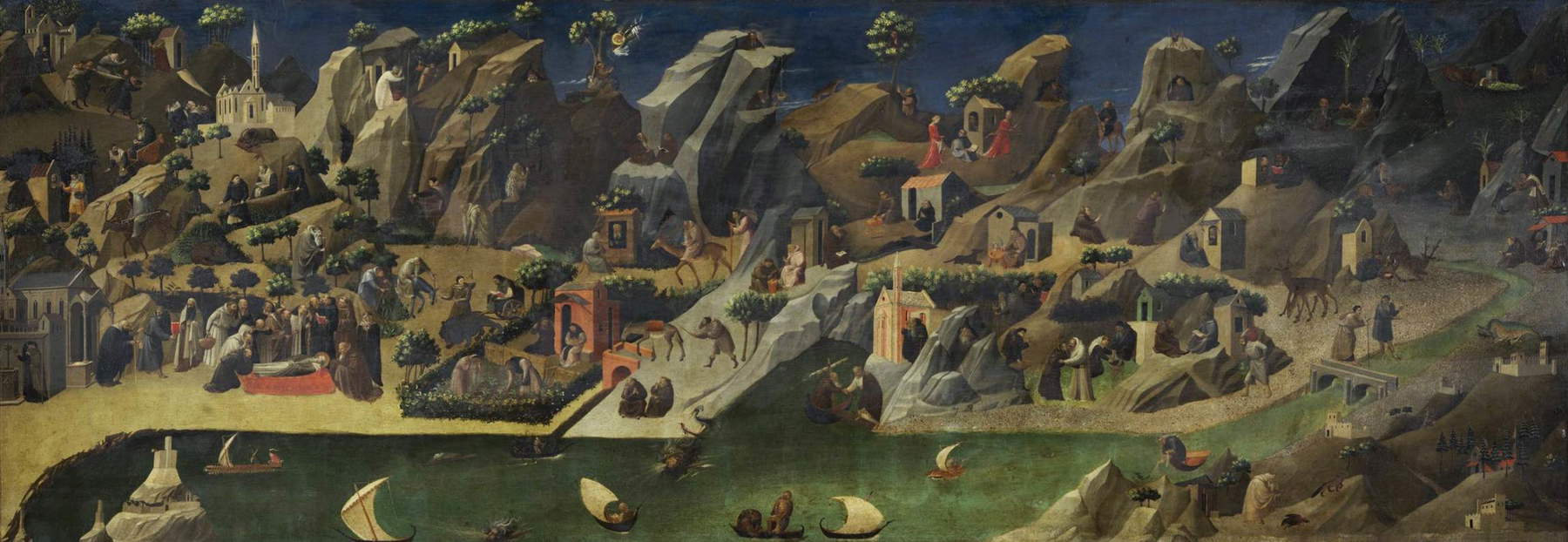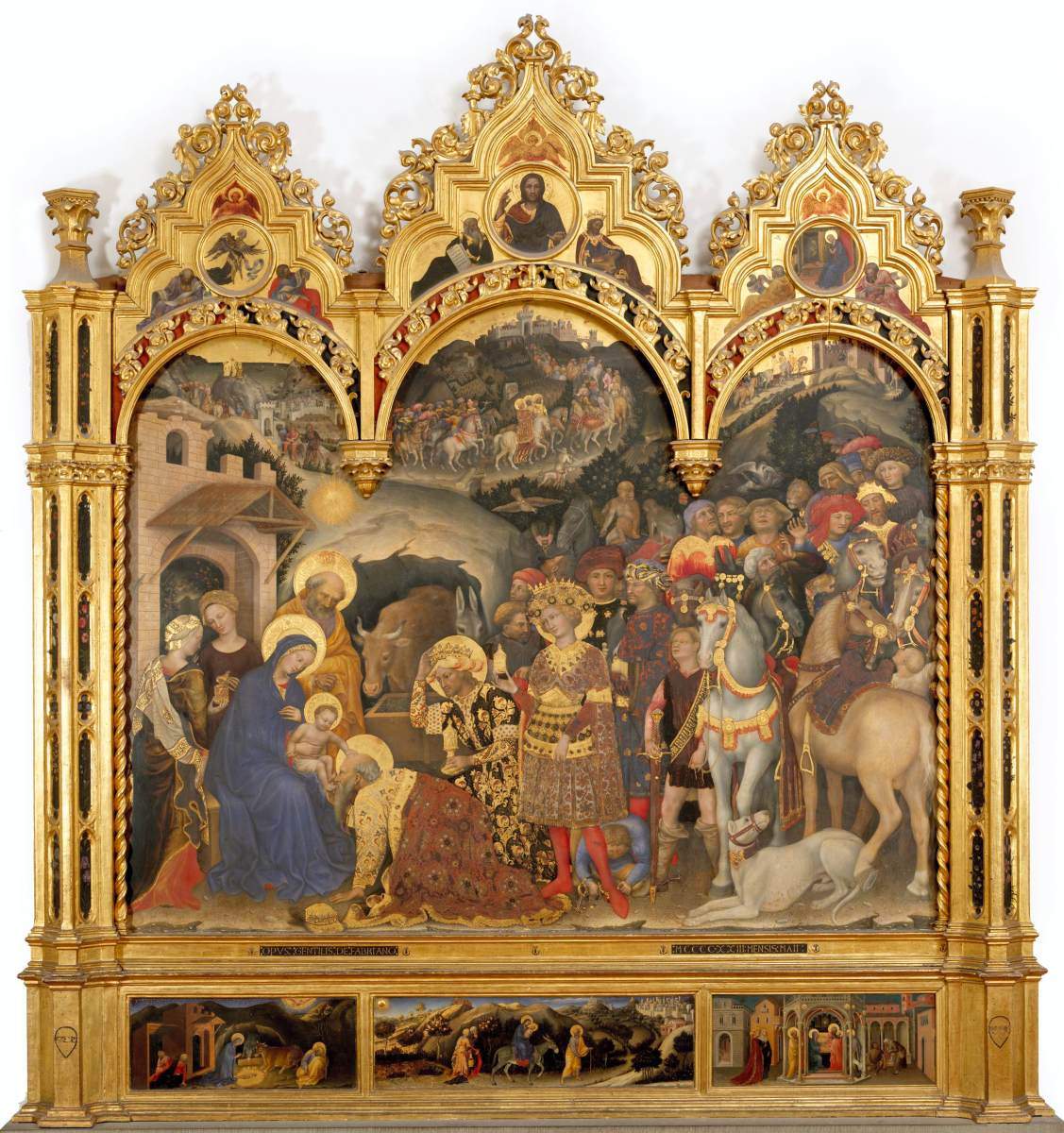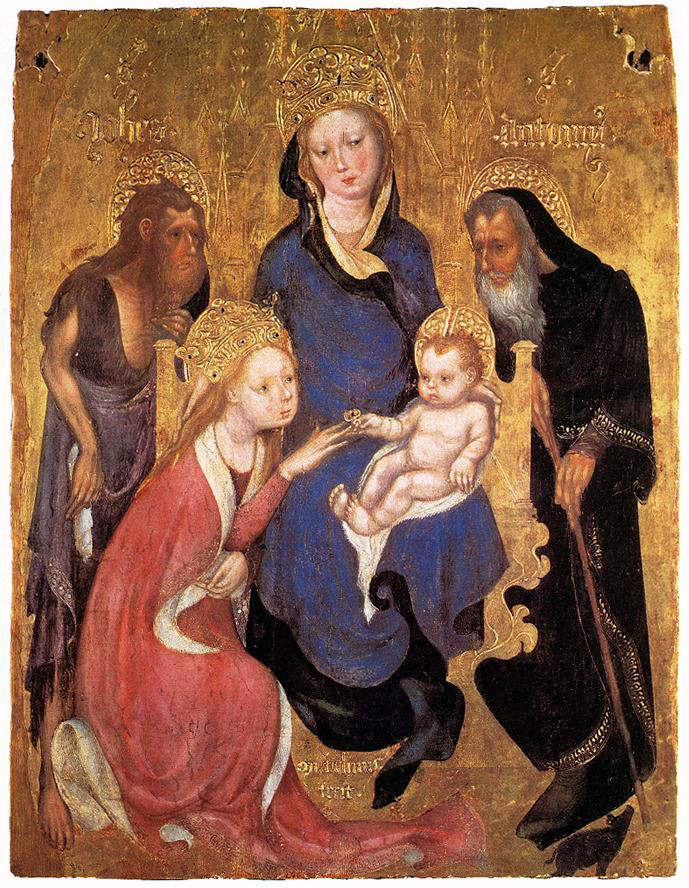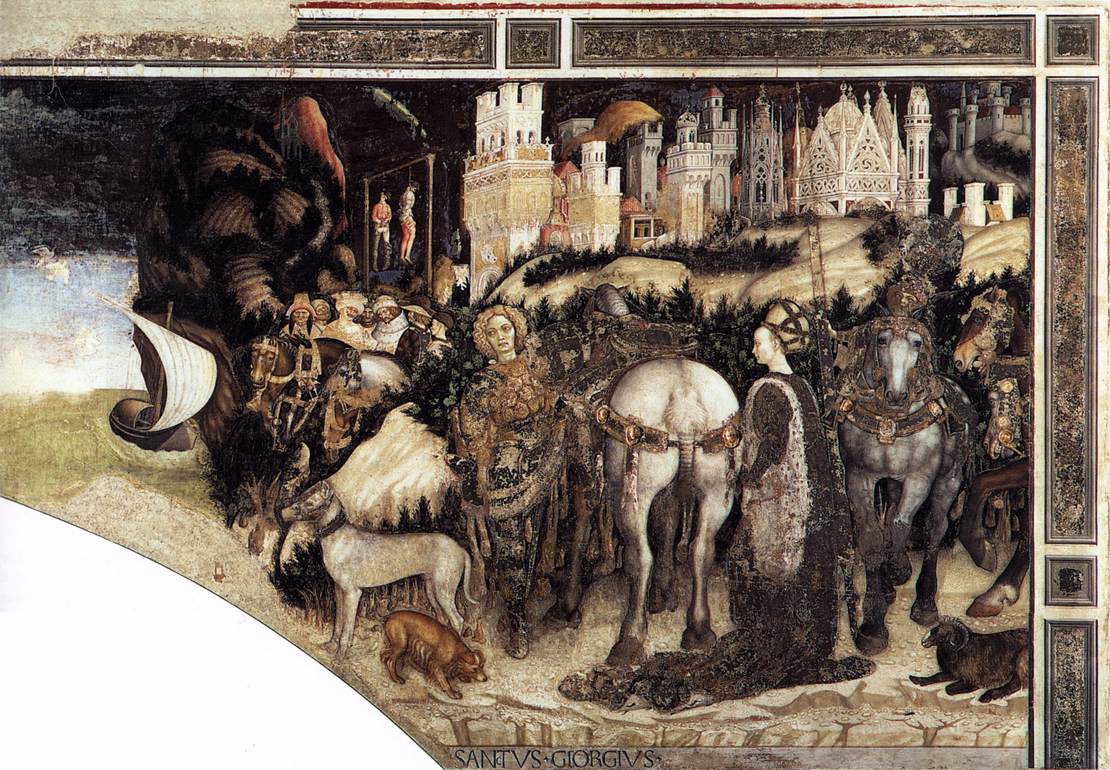Beginning in the second half of the 14th century, the loss of prestige of three great medieval institutions, namely theEmpire, the Papacy and the communes, had had the effect of fostering the strengthening of some monarchies that centralized their power (such as those of France and England) and, in Italy (especially in the north), the rise of the Signorie. Where, on the other hand, republican forms of government continued to endure, as in Florence or Siena, important was the growth of the weight of the bourgeoisie, whose members began to hold many of the most important political offices. This situation led to the development of a style that crossed the borders of nations, taking on similar basic characteristics throughout Europe (but with considerable and widespread regional variations): this is the period known as International Gothic. And the internationality was not due to the fact that the new style was born in a specific area of Europe and spread from there to the rest of the continent, but was rather fostered by mutual contacts between artists from different experiences and locations. During this period, in fact, artists used to move around a lot, even covering on some occasions very long journeys from one part of Europe to another. And along with the artists, of course, models, styles, trends, orientations circulated.
The International Gothic was a European phenomenon: it developed particularly between France (especially in Avignon, which became one of the most important artistic centers on the continent after the papal court moved there, and Burgundy, where the capital Dijon became one of the main propulsive centers of the time and where the inspiration of the sculptor Claus Sluter flourished) andItaly, but other areas were also affected. In Spain, for example, the city of Valencia, at the time one of the busiest ports in Europe, experienced a remarkable artistic development (one of the masters of international Italian Gothic, Gherardo Starnina, also stayed in Valencia for some time). Again, a certain liveliness is recorded in Prague and Bohemia.





There is no single expression to define the movement known as “International Gothic.” “International Gothic” is the most widespread and accepted expression today (it was coined in the late nineteenth century by the French scholar Louis Courajoud) because the internationality of the movement is the most common trait of the trends that emerged in the second half of the fourteenth century: however, scholars, focusing on other aspects, have developed other terms to define the movement. Very popular is the term "late Gothic," which leverages chronology (it experienced its rise and development indicatively between 1350 and 1450), to indicate its continuity but also its differences from the Gothic style, as well as to mark its caesura from the Renaissance innovations that would appear shortly thereafter. Again, the term “courtly Gothic” refers to the fact that the International Gothic would be a typical creation of the courts andaristocracy (whose taste it represents) as a reaction to the increasingly widespread emergence of the bourgeoisie, which in turn was nonetheless strongly fascinated by the fantastic world of the International Gothic.
Again, other terms used to refer to the movement are “flamboyant Gothic” or, though less common, “delicate style” (in German Weicher Stil: in this case the reference is, precisely, to the style, to emphasize how in this phase prevailing elements were the preciousness and softness of lines), or flamboyant Gothic (especially in architecture) because of the shape of the lines of some decorative elements (especially in architecture: windows, rose windows... ) that resembled that of flames.
The International Gothic was distinguished by being a style rather far removed from the social reality of the time: the themes were taken mainly from religion or were purely courtly and chivalric themes, the atmospheres underwent a kind of idealization, the narrative took on the connotations of a fairy tale (often with fantastic elements), and the religious scenes took on characters of greater lyricism and greater delicacy, in line, moreover, with the loss of authority on the part of the Church. Having in fact lost much of its credibility, especially as a result of the so-called Western Schism, which for about forty years (1378 to 1417) saw the clash between Roman and Avignon popes, the faithful sought a more intimate religiosity and a more direct relationship with God, and art had to be able to respond to this renewed religiosity. The consequence led to several changes in religious art: first of all, a greater humanity in the figures of the sacred repertoire (Madonnas, saints).
Added to all these characteristics was a marked formal elegance, which often took on the characteristics of high preciosity and love of luxury, especially in those cities where, lacking a court or a strong aristocracy, it was the wealthier bourgeoisie that imposed taste: this is the case, for example, in Florence, where the major patrons were the wealthy families of the city (such as the Strozzi family) and where one of the greatest protagonists of this season of art history (and probably the most elegant and sumptuous in his achievements) found fertile ground, namely the Marche-born Gentile da Fabriano (Fabriano, c. 1370 - Rome, 1427), who was among the greatest interpreters of the taste of his time. With his achievements overflowing with gold and luxurious decorations, as well as formal delicacy (this is the case with the splendid Adoration of the Magi, 1423, Florence, Uffizi), he also made his influence felt by artists belonging to the Renaissance, which arose precisely at the height of the development of late Gothic art. Somewhat opposite to that of Gentile da Fabriano was the interpretation of international Gothic taste elaborated by Lorenzo Monaco (Siena, c. 1370 - Florence, c. 1424), a brother-painter, endowed with a high sense of religious devotion, who achieved results of great elegance not through luxury but through the exceptional brilliance of his colors and the extraordinary delicacy of his sign, which gave rise to figures that seemed almost evanescent so idealized were they (such as those in his Adoration of the Magi, 1422, Florence, Uffizi).
In Florence, however, the push toward the elaboration of a language that would break free from the dominant “giottismo” around the 1450s was given above all by Gherardo Starnina (Florence, c. 1354-before 1413), an artist who traveled to Spain and returned to Tuscany where he updated the stylistic features of local production: he is one of the best witnesses of those exchanges between artists at the European level mentioned in the opening. Other examples are those of Álvaro Pirez (Evora, Portugal, c. 1400 - c. 1434), a Portuguese painter who moved to Tuscany, and Masolino da Panicale (Panicale, 1383 - Florence, 1440), who worked for some time in Hungary and who, moreover, was probably the first of the international Gothic artists who tried to open up to the nascent Renaissance innovations. He remained, however, a late Gothic painter, unlike other late Gothic artists who instead fully embraced the new instances in art.




Florence, however, did not have the central role for the International Gothic that it would have in the Renaissance: it was one of many places where the new style had taken root and where it was interpreted according to the taste of patrons and artists. Artists who interpreted the International Gothic in its courtly component found space in northern Italy: this was the case with Giacomo Jacquerio (Turin, c. 1375 Turin, 1453), a painter who was active in Turin with the princes of Achaia and who also often stayed in France, especially in Burgundy. Another important artistic center of the time was Milan: at the Visconti court worked an artist such as Giovannino de’ Grassi (Milan, c. 1350 - 1398), who was a miniaturist with uncommon descriptive skill. He left a Taccuino di disegni (notebook of drawings ) preserved in the Biblioteca Civica di Bergamo and containing a large repertoire of figures and situations from which many artists who came after him drew. Michelino da Besozzo (Besozzo, c. 1370, c. 1455), a pupil of Giovannino de’ Grassi, was also active in Milan; he imposed an art made up of restrained elegance that could, however, coexist with a not inconsiderable sense of realism and expression of feelings(Mystic Marriage of St. Catherine, c. 1440-1445, Siena, Pinacoteca Nazionale), with which all painters of later generations in Milan had to contend.
Veneto, too, was an area in which the International Gothic experienced diffusion, but in this season the primacy was not that of Venice, but of Verona. The city was experiencing the last years of the Scaliger dynasty, which ended in 1387 with the ouster of Antonio della Scala by the Milanese led by Gian Galeazzo Visconti, who ill tolerated Verona’s expansionist aims. After a brief period of Milanese rule and renewed attempts at independence, Verona finally came under the rule of Venice in 1405. This political situation did not, however, prevent the birth of the genius of Antonio Pisano better known as Pisanello (c. 1395 - c. 1450): born in Pisa or Verona to a Pisan family, Pisanello was in Italy the greatest interpreter of the fairy tale narrative of international Gothic, thanks to his interpretation of all courtly values, without neglecting the elegance that was one of the fundamental bases of the style(Saint George and the Princess, 1436-1438, Verona, Sant’Anastasia).
Smaller centers in Italy also had their own protagonists: this is the case of Battista di Gerio (Pisa, news from 1414 to 1418), active between Lucca and Pisa, an interesting interpreter of various suggestions, especially from Tuscany and Florence, which he knew how to fuse to give his own personal interpretation of the International Gothic.
 |
| The International Gothic: term, origins and development of the movement |
Warning: the translation into English of the original Italian article was created using automatic tools. We undertake to review all articles, but we do not guarantee the total absence of inaccuracies in the translation due to the program. You can find the original by clicking on the ITA button. If you find any mistake,please contact us.